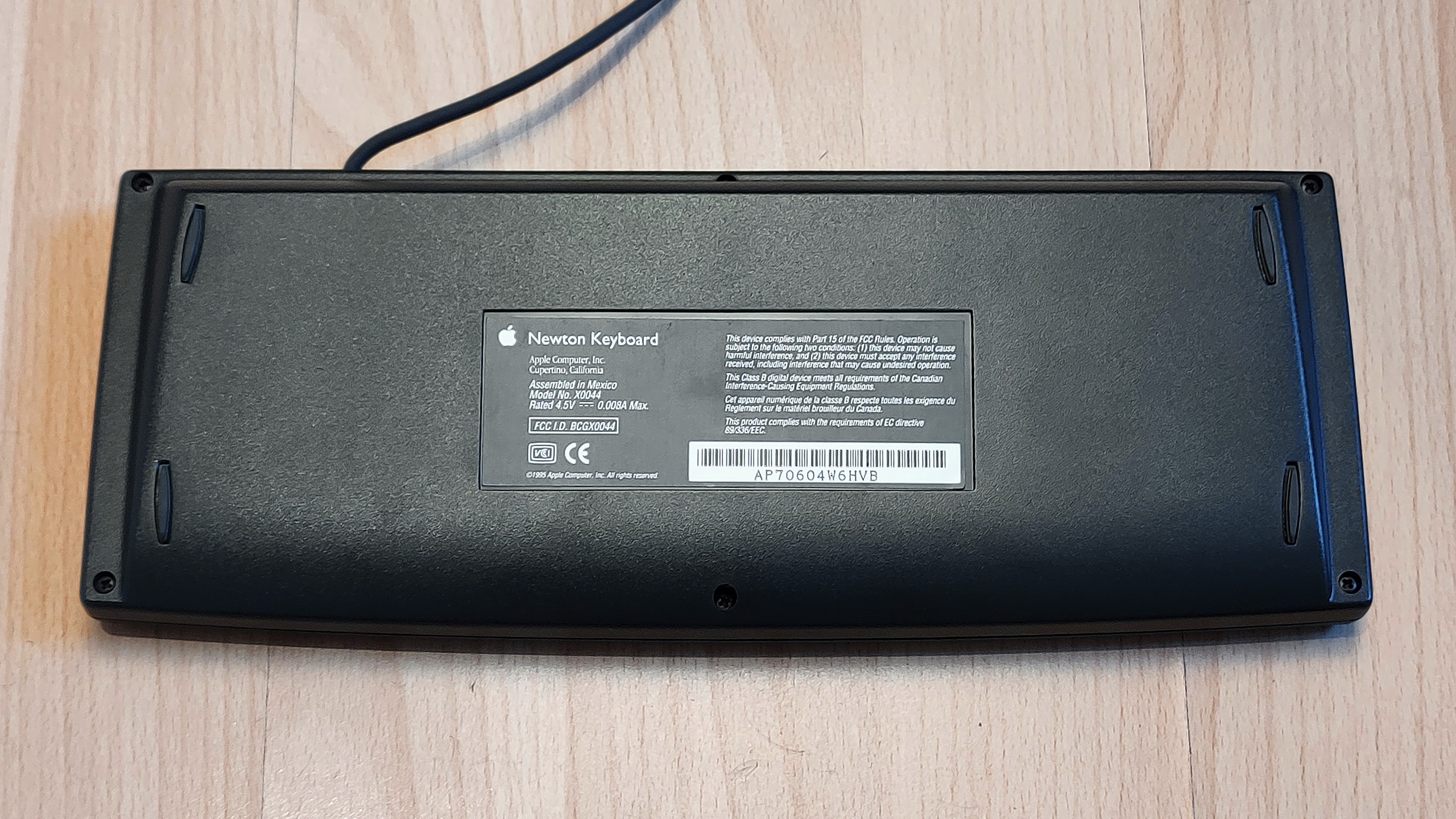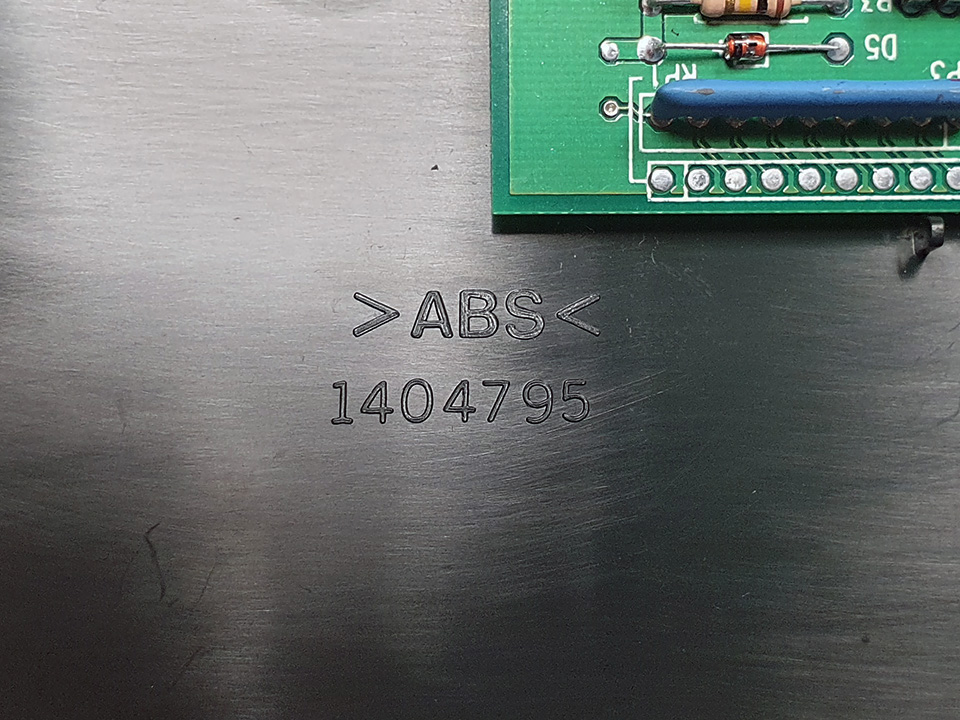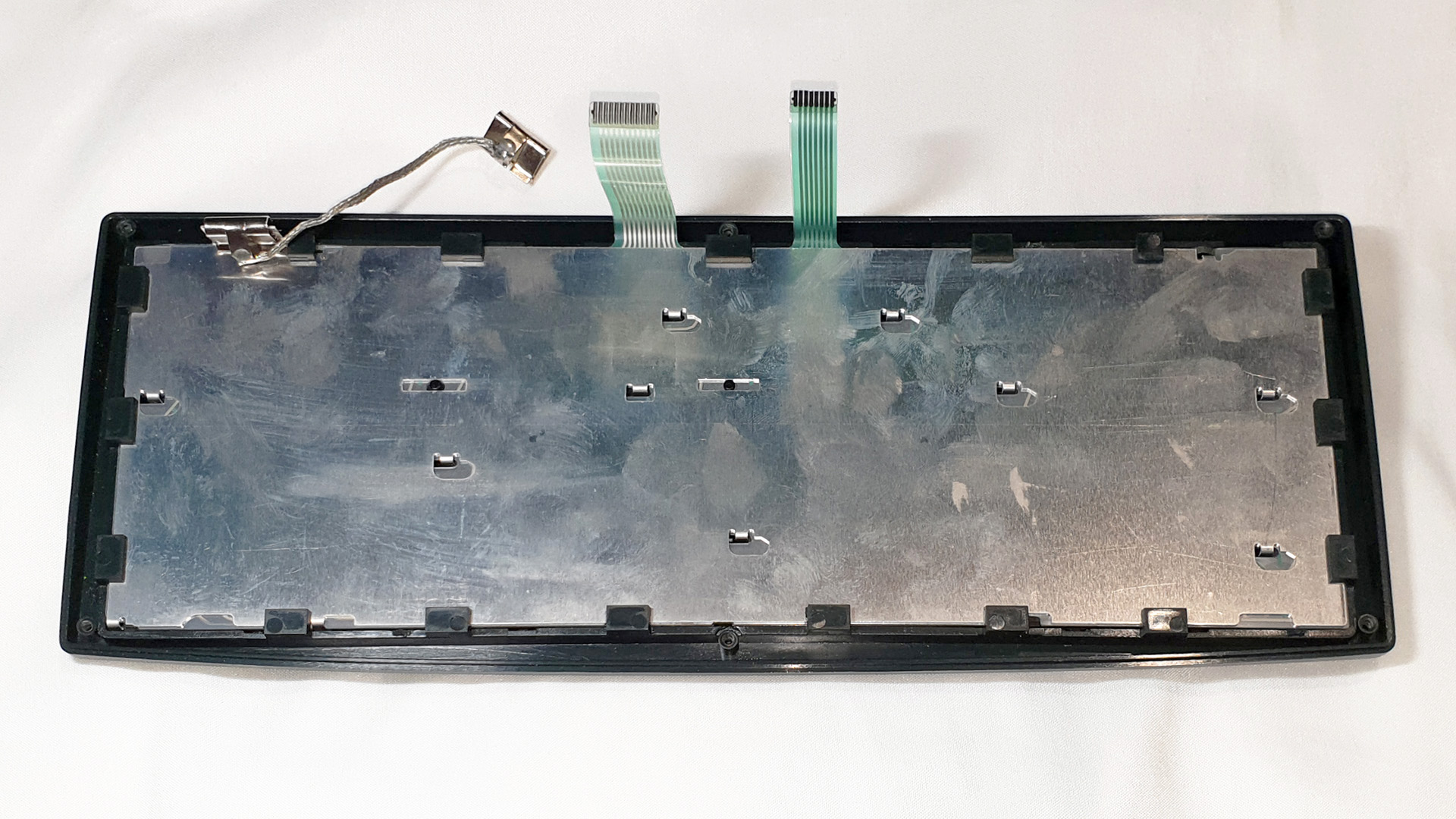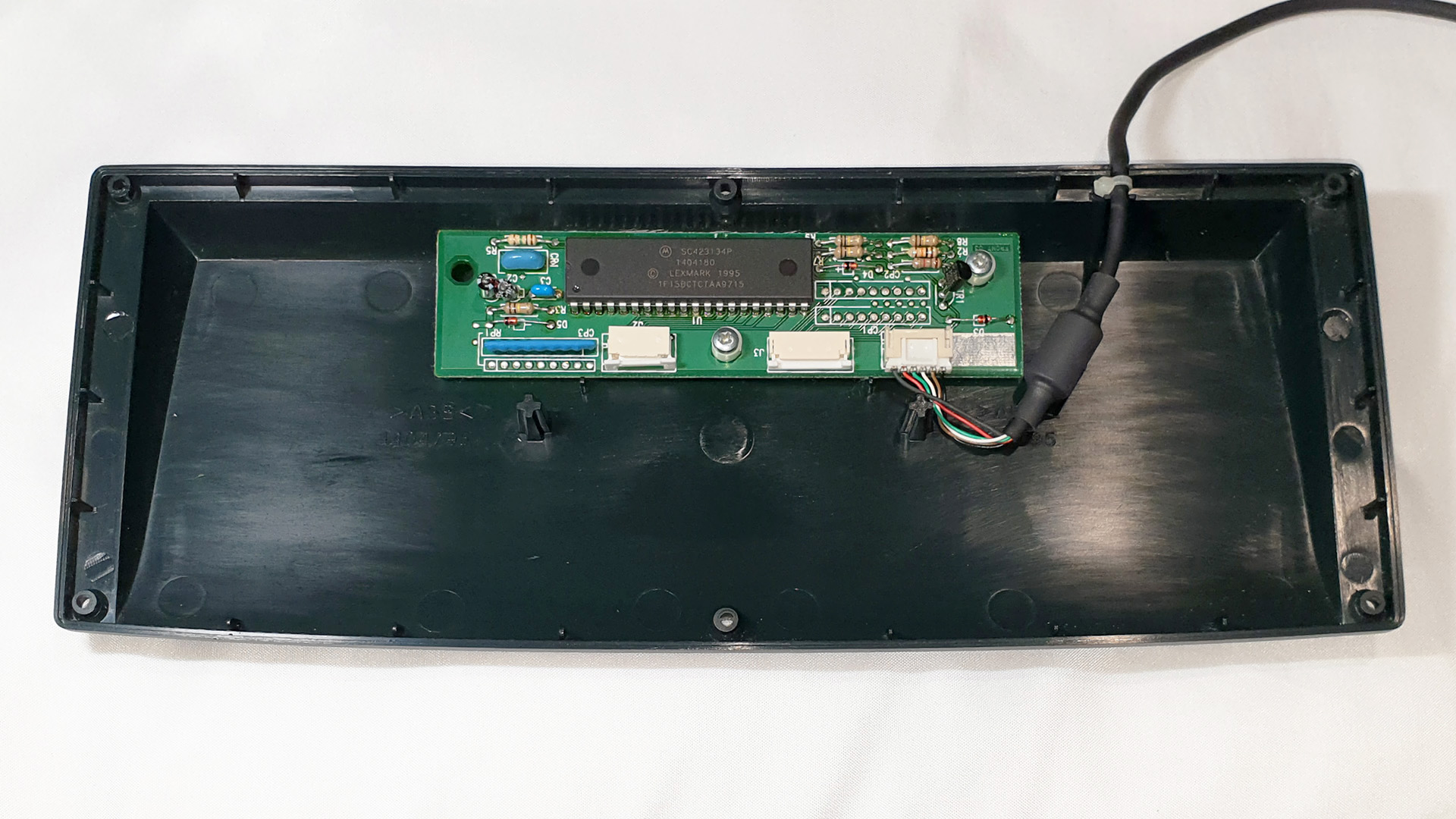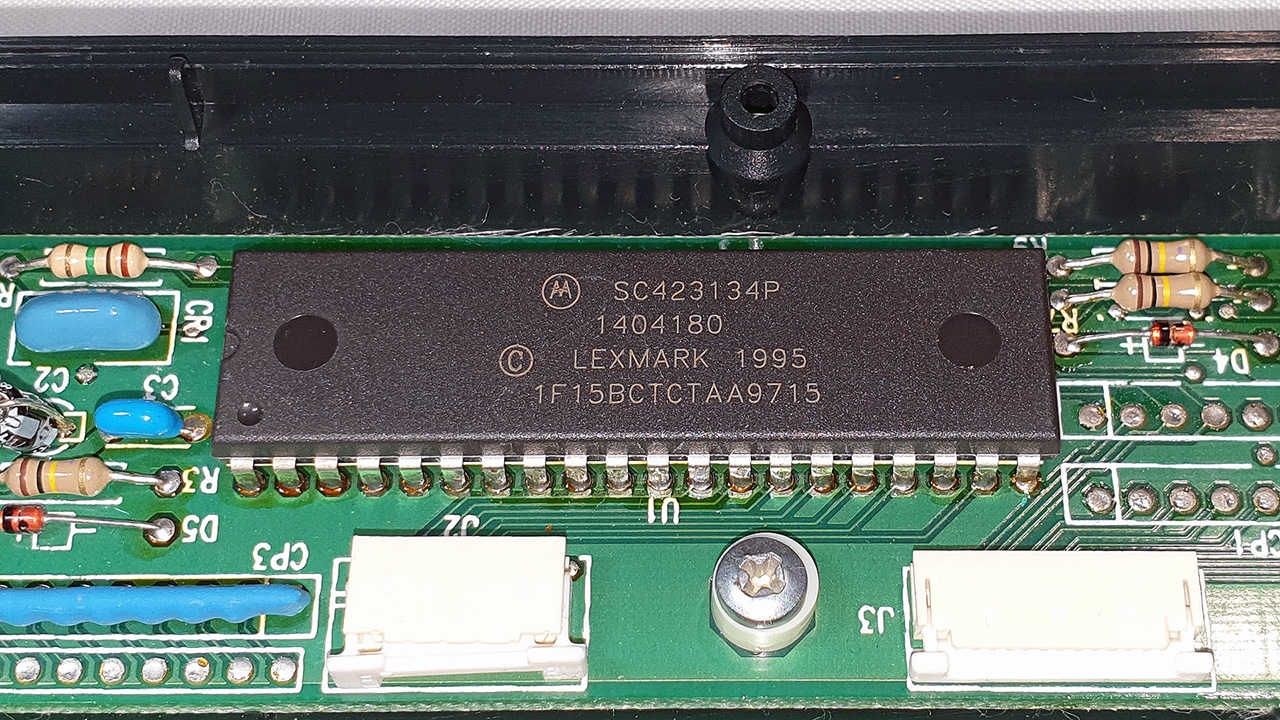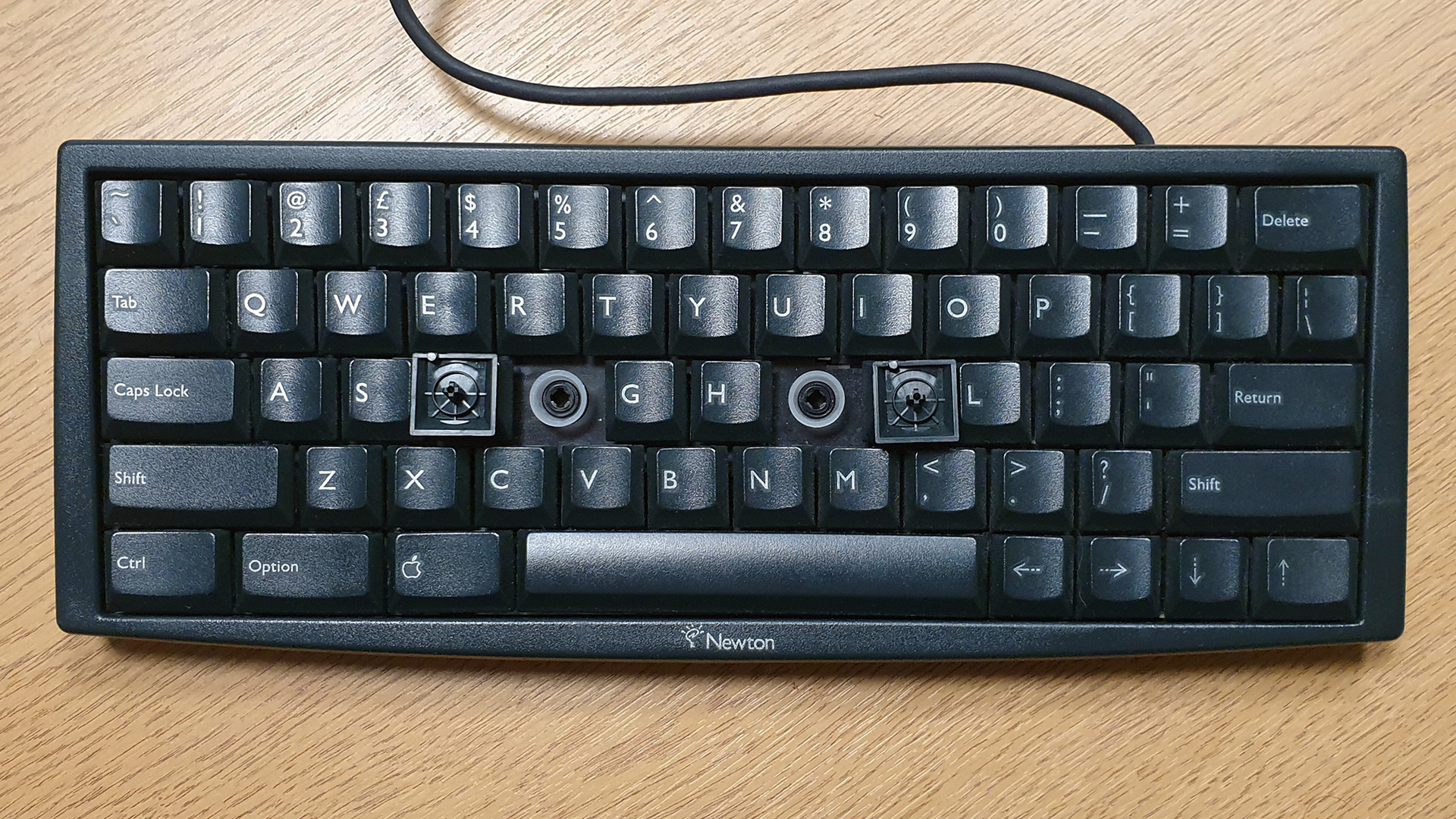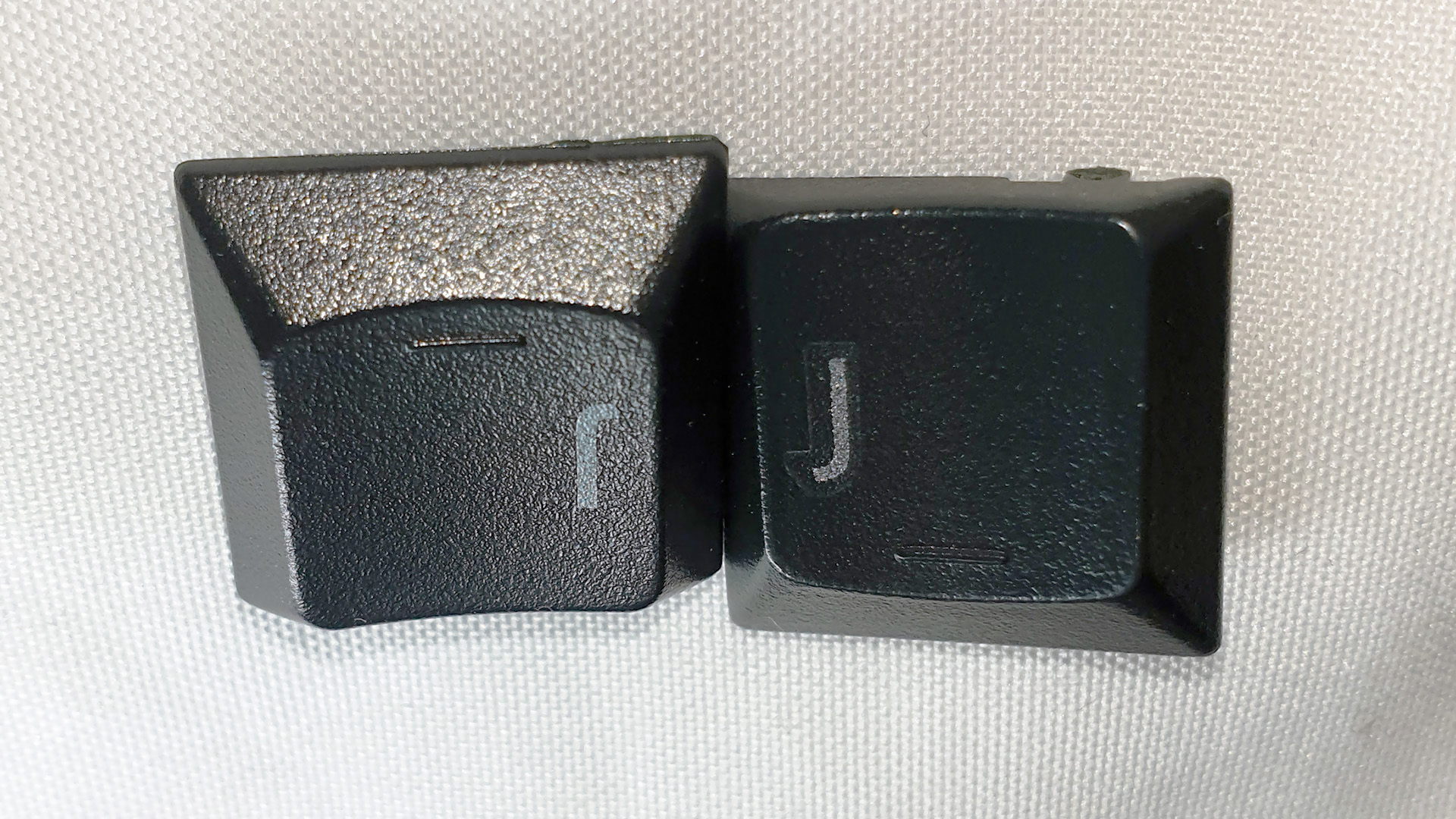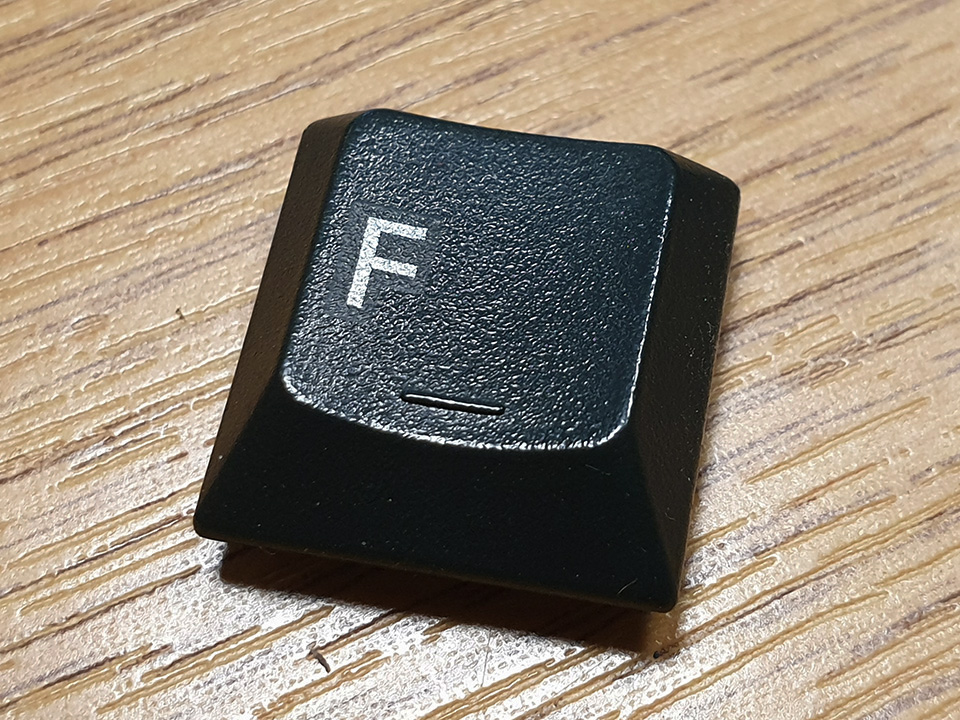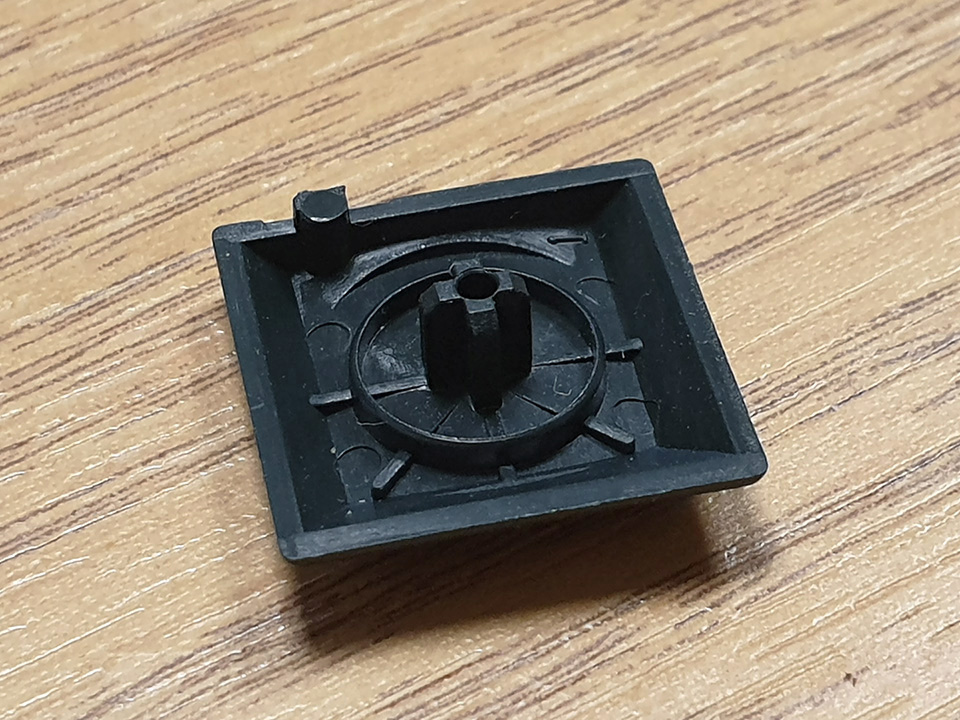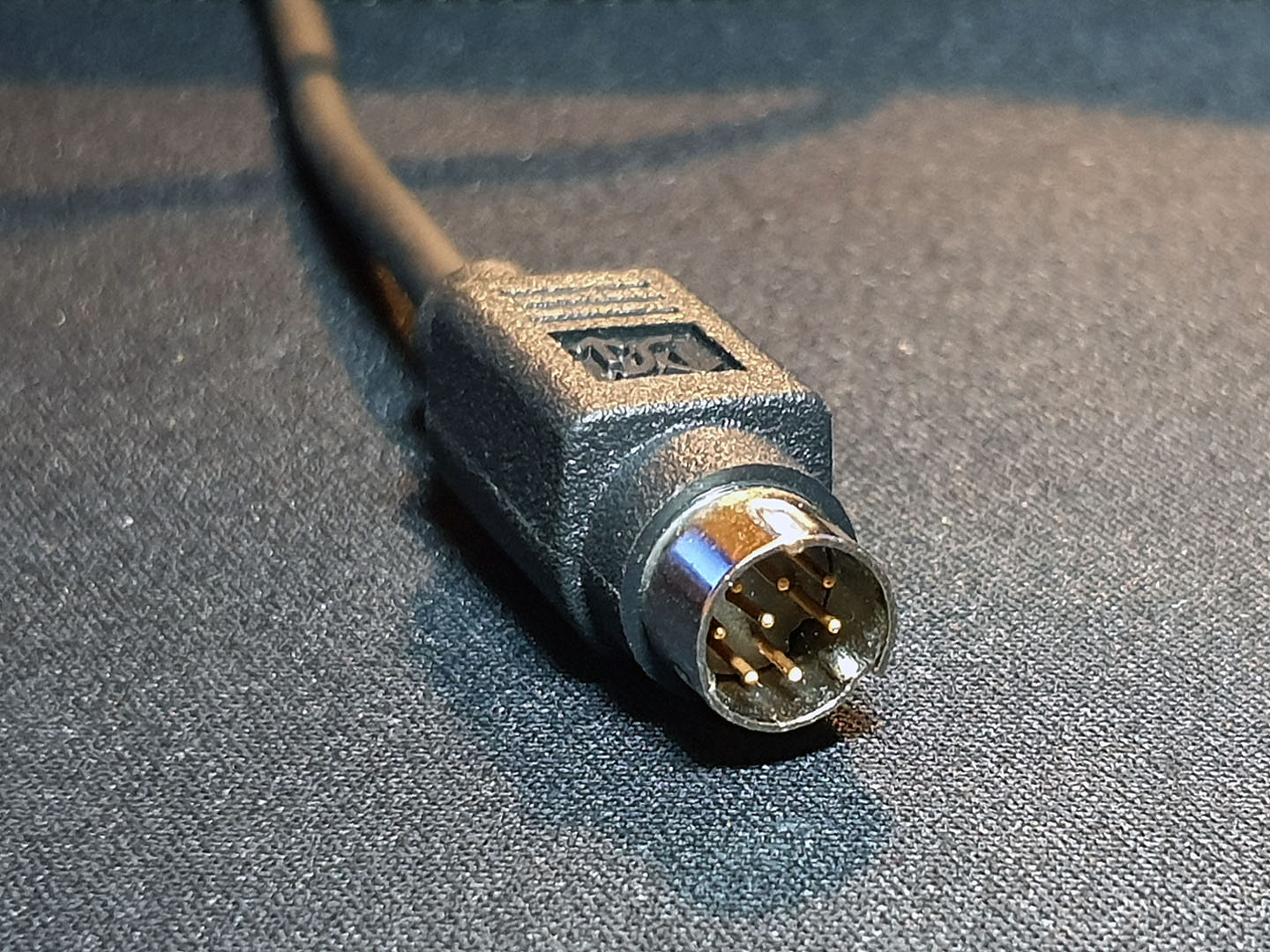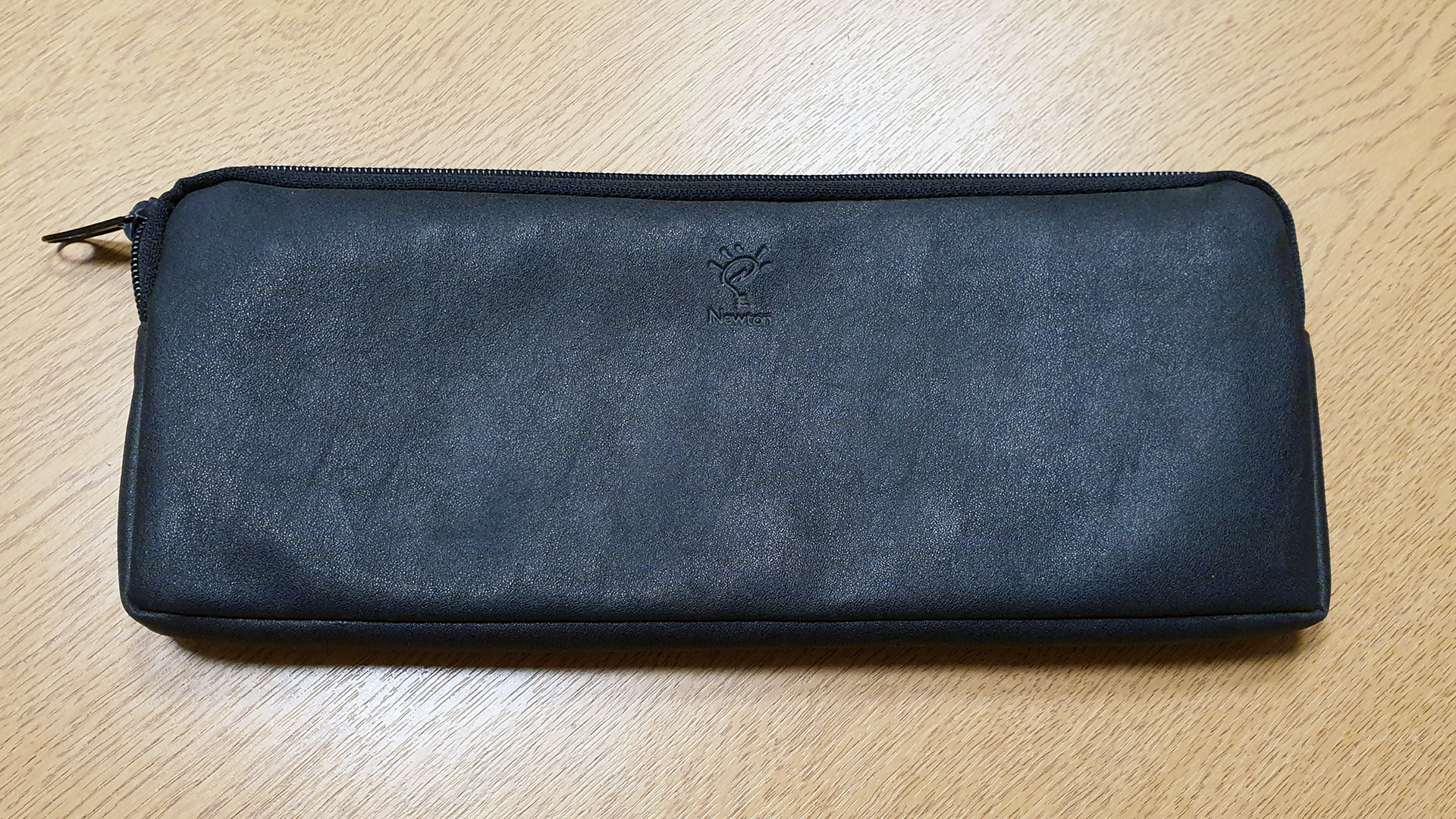Apple Newton MessagePad Keyboard X0044
| Apple Newton MessagePad Keyboard X0044 | |
 |
|
| Designation | Model M6-1 |
| Manufacturer | Lexmark Key Tronic |
| Switch | IBM buckling rubber sleeve |
| Sense method | Conductive membrane assembly |
| Protocol | Serial, Mini-DIN-8 connector |
| Keycaps | Pad-printed ABS |
The Apple Newton MessagePad Keyboard (model X0044) was a small form-factor keyboard for the Apple Newton personal digital assistant (PDA). It was introduced by Apple in early 1996 alongside the release of Newton OS 2.0.1) It was designed by Lexmark for Apple and is derived from IBM Model M6-1 keyboard assemblies such as those found on period IBM ThinkPad and Lexmark Lexbook laptops.
Description
Construction
Case
The X0044's case was made with ABS as indicated by embossed text on the inside of the keyboard's bottom cover piece. The keyboard can be identified by the lack of straight edges on its left, right and front (relative to the user) lips. The front lip also sports a “Newton” logo with a stylised lightbulb icon. The keyboard has a slight wedge shape to provide it with a raised but static typing angle. On the bottom, the keyboard has four thin rubber feet to provide purchase. The bottom cover piece's part number is 1404795.
Assembly
The top cover piece and the internal keyboard assembly are secured to each other via a series of clips around the perimeter of the piece. The assembly can be separated from the top cover by prying until the assembly is free from the clips, but it should be noted that these clips can break easily. The clips have been observed to have broken without opening the keyboard, so flexing the keyboard is also another possible concern. It appears this weakness was identified during production as keyboards with main IC chip date-codes closer to 1997 have on their bottom case piece two raised stalks that hold up the assembly whereas ones with date-codes closer to 1995 do not.
The internal assembly design is typical of an M6/M6-1 keyboard and is a sandwich of four layers:
- The membrane blanket (casually known as a “[rubber] mat”) is a rubber sheet used to dampen the stress the actuators exert on the membrane assembly.
- The membrane assembly is a part of the key-switch system used as the circuitry to be actuated and facilitates an 11-column, 7-row key-matrix.
- The backplate provides some rigidity. The backplate uses hooks to slide-attach through the assembly and to the barrel plate.
A notable observation is that the barrel plate has what appears to be a cut-out for a pointing stick sensor assembly (ie, strain gauges for IBM ThinkPads and force-sensing resistors for Lexmark-OEM laptops). This might imply shared tooling with an existing laptop. The IBM 2603 ThinkPad 500 and 2604 ThinkPad 510Cs are likely to be the closest IBM relatives to the X0044 as they both used a pointing stick (and would require such a cut-out) and the same style of IBM buckling rubber sleeve key-switch implementation.
Controller
The X0044 is unique amongst M6/M6-1 keyboards in that it's a discrete keyboard, so it also gets a discrete controller card. It has a Motorola SC423134P integrated controller that is copyright of Lexmark 1995. [If it was ever published] no specsheet for this IC has been located thus far.2) It appears the last four digits of the IC's serial number (the last line silk-screened on the chip) are a year and week date code, which is presently the only way an X0044 keyboard can be dated since the keyboard's rear label only has a copyright date.
Besides the IC, the controller card PCB notably has two FFC connectors for the membrane assembly (an 11-pin socket for key-matrix columns and a 7-pin socket for key-matrix rows) and a 6-pin JST PH-style socket for the keyboard-to-PDA cable. The PCB has 3 possible screw holes although only two are utilised.
Switches
Being an M6-1, the X0044 uses IBM “buckling rubber sleeve” tactile key-switches, an IBM “Quiet Touch” technology used by a significant subset of the IBM Model M keyboard family for high-tactility applications that don't require audible clicking and for the most part need to be relatively (especially by '90s standards) low-profile. Like its closest relatives, the IBM ThinkPads 500 and 510Cs, the X0044's small size mandated smaller sleeve elements and lower key-travel than most other IBM Model Ms with buckling sleeves. The sleeve size is dubbed “medium gauge”; such sleeves typically have a diameter of ~11mm and provide ~2.5mm travel.3) The sleeves are typically clear and translucent.
Keycaps
Due to the switches, the keycaps were also inherited from prior IBM designs and suited for use with 'medium-gauge' buckling rubber sleeves. The material is believed to be at least partially ABS as per chemical tests known to dissolve ABS have dissolved M6/M6-1 keycaps at large. What is unique about the X0044's keycaps are their base colour (more blue than any other M6/M6-1 keycap) and the font. The legends appear to be pad-printed and their design appeared to be revised at some point since keyboards with main IC chip date-codes closer to 1997 have extended outlines from the text compared to ones with date-codes closer to 1995. A single-unit keycap size is approximately 16mm x 16mm x 3mm.
Connectivity
The X0044 has a small cable terminating in an 8-pin Mini-DIN plug. This plug is the same used for Apple LocalTalk but that is as far as the similarities go. The signal is a serial connection (asynchronous, positive logic, 9600-baud, least bit first). Several converters for connecting X0044s to modern PCs exist, including using TMK4) and QMK5) firmware and independent efforts such as the Newton Keyboard Enabler.6)

